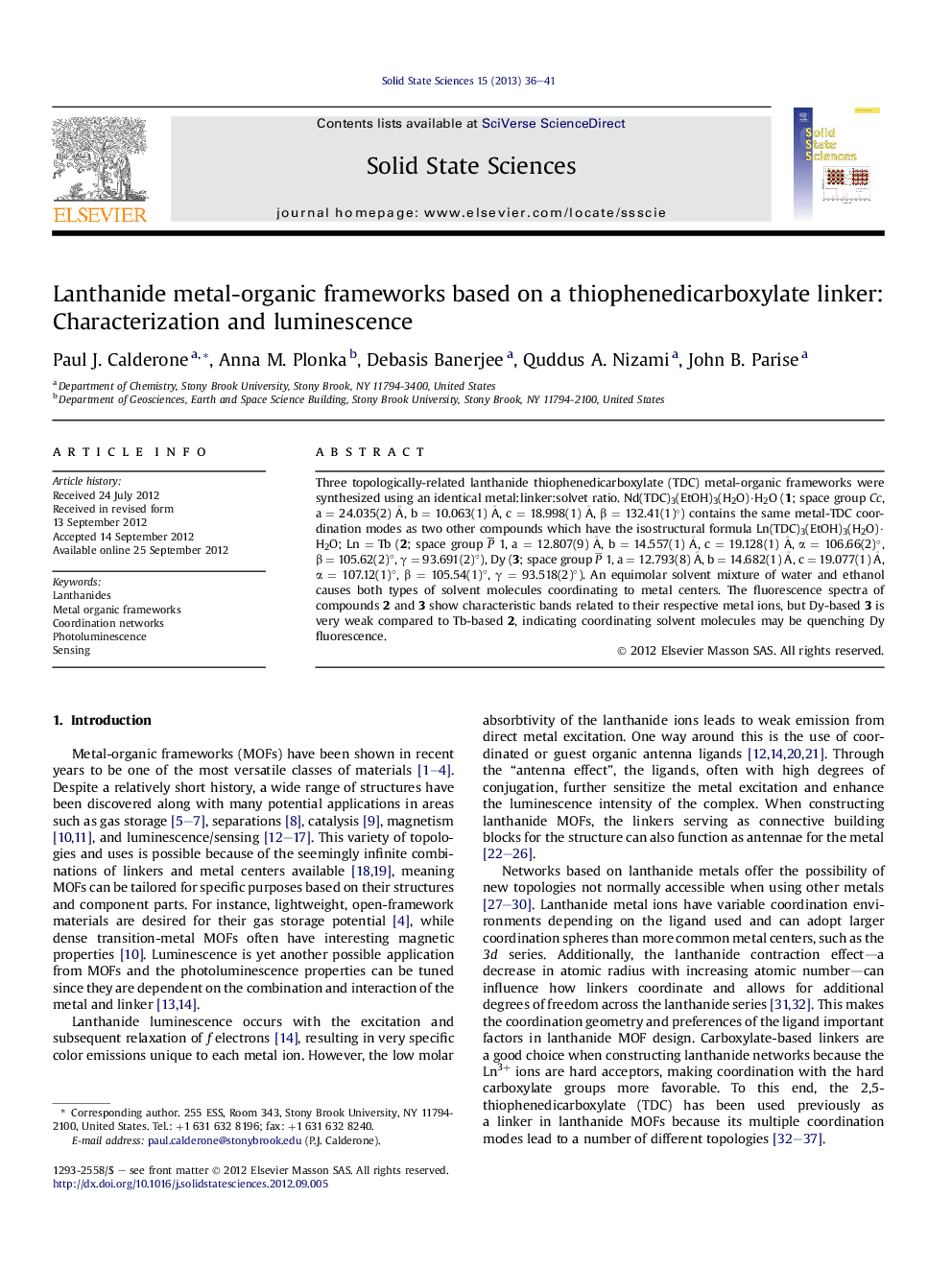| Article ID | Journal | Published Year | Pages | File Type |
|---|---|---|---|---|
| 1504858 | Solid State Sciences | 2013 | 6 Pages |
Three topologically-related lanthanide thiophenedicarboxylate (TDC) metal-organic frameworks were synthesized using an identical metal:linker:solvet ratio. Nd(TDC)3(EtOH)3(H2O)·H2O (1; space group Cc, a = 24.035(2) Å, b = 10.063(1) Å, c = 18.998(1) Å, β = 132.41(1)°) contains the same metal-TDC coordination modes as two other compounds which have the isostructural formula Ln(TDC)3(EtOH)3(H2O)·H2O; Ln = Tb (2; space group P¯ 1, a = 12.807(9) Å, b = 14.557(1) Å, c = 19.128(1) Å, α = 106.66(2)°, β = 105.62(2)°, γ = 93.691(2)°), Dy (3; space group P¯ 1, a = 12.793(8) Å, b = 14.682(1) Å, c = 19.077(1) Å, α = 107.12(1)°, β = 105.54(1)°, γ = 93.518(2)°). An equimolar solvent mixture of water and ethanol causes both types of solvent molecules coordinating to metal centers. The fluorescence spectra of compounds 2 and 3 show characteristic bands related to their respective metal ions, but Dy-based 3 is very weak compared to Tb-based 2, indicating coordinating solvent molecules may be quenching Dy fluorescence.
Graphical abstractFigure optionsDownload full-size imageDownload as PowerPoint slideHighlights► Three lanthanide thiophenedicarboxylate MOFs based on Nd, Tb, and Dy. ► Same empirical formula for each network, but slightly different ligand packing. ► Tb shows strong emission compared to Dy framework.
